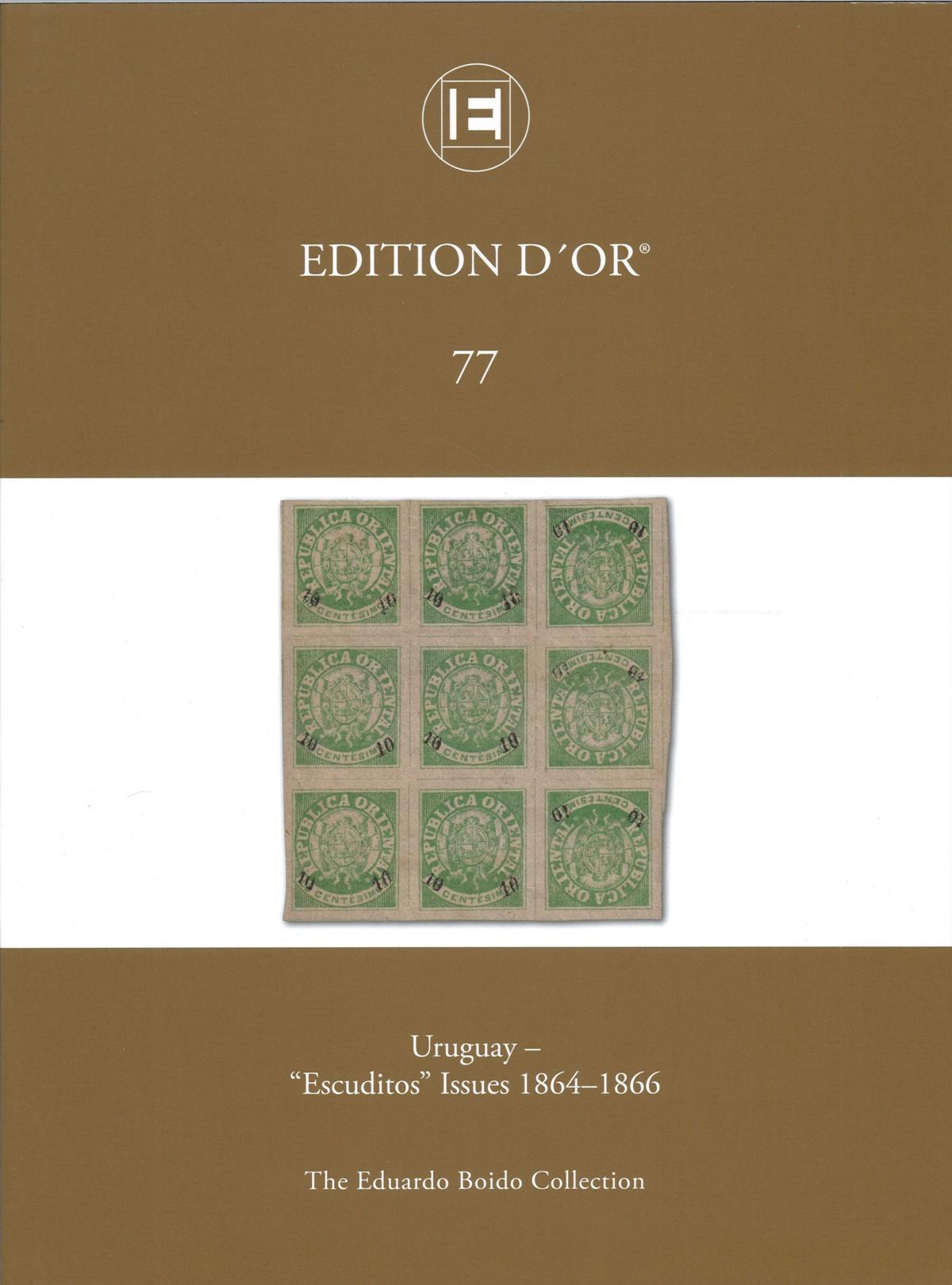A glance at the MICHEL catalogue shows that individual stamps are hardly worth mentioning. But this does not hide the fact that they are unusual and anything but ordinary. After all, in 1860 Uruguay had only 223,238 inhabitants! Eduardo Boido is an expert in bringing out the appeal of these issues (four values of 6, 8, 10 and 12 cents from 1864), as well as the overprinted provisionals of 1 January 1866 (5 at 12 cents, 10 at 8 cents, 15 at 10 cents and 20 at 6 cents). He specialises in the different types and subtypes, the printing variations, the different papers and stamps, but also the forgeries. It combines traditional aspects with postal history, and the exhibition shines with many of the largest known units. The 1864 series includes a 56-sheet block of 6c salmon on thick paper and a 64-sheet section of 8c, the largest known unit of this issue, even showing the tête-bêche pairs.
Also included in this exceptional collection is a block of 56 stamps from the 1866 issue, ranging in value from 20 to 6c. If we take just these three large blocks as an example, we actually have to go back more than 80 years to find such great rarities in A. Lichtenstein’s collection. What makes these two issues, especially the 1866 issue, so rare and difficult? The answer is simple. The provisional overprints – the first to be issued on the South American continent – were only in circulation for 10 days. The Post Office of the time had ordered – in good time? – and announced the postage increases for 1 January 1866, but the stamps had not yet arrived. So they were forced to overprint them with the new values of the changed postage rates. Imagine: a stamp issue that was only in circulation for ten days, because from 10 January, the newly printed stamps with the large value numerals in the national coat of arms were issued in values of 1, 5, 10, 15 and 20 cents.
Boido’s exhibition is divided into two parts: five frames are reserved for the documentation of the 1864 issue and another three for the 1866 provisionals. Born on 29 August 1966 in Montevideo, Uruguay, the philatelist’s collection is impressive in terms of quality and rarity. He has been managing the family vineyards since 2000 and works as a lecturer in his field of study (he has a doctorate in chemistry). He is also involved in associations, for example as general commissioner for international exhibitions. This book is a pleasure to look at and reveals the fascination of the country’s early stamp issues.
Short info: size 25,5 x 34 cm, 152 pages, art paper, colour images, hardcover with gold embossing on title and spine, additional dust jacket, price: 79 Euro plus shipping costs. Available at: Heinrich Köhler Auktionshaus GmbH & Co. KG, Hasengartenstraße 25, 65189 Wiesbaden, FON +49 (0) 611 34 14 90, e-mail: info@heinrich-koehler.de


